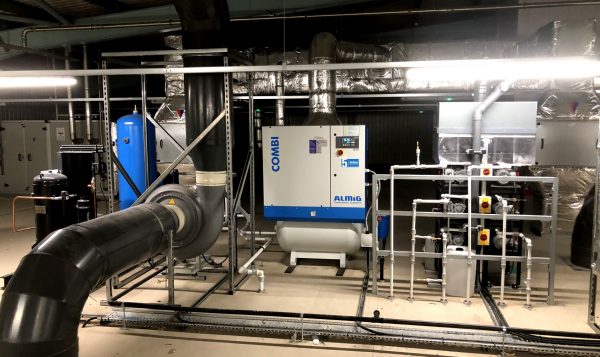Why Attention Should Be Paid More to Workplace Air Quality

Strong 8k brings an ultra-HD IPTV experience to your living room and your pocket.
When we discuss workplace safety, we frequently think of obvious hazards like loud noises, slick floors, and large machinery. But air quality? It's easy to overlook that risk until people begin to feel ill. The air can contain invisible hazards like dust, fumes, and vapours that gradually impair health in settings like factories, labs, or welding bays. Workplaces use devices such as local exhaust ventilation, fume extraction systems, and welding extract systems to help maintain clean air.
Local Exhaust Ventilation – How It Works
Large metal hoods that hang over workbenches or machines are likely familiar to you. A local exhaust ventilation (LEV) system includes these. Instead of cleaning the air in the entire room, LEV targets the specific point where fumes or particles are being created — like where someone is sanding, grinding, or welding.
The idea is simple: catch it before it spreads. A basic LEV system includes:
- A hood that captures air right at the source
- Ducts that guide the air away
- Filters or scrubbers that clean it
- A fan to keep everything moving
This kind of system is effective because it acts fast, right where the problem starts.
What Fume Extraction Systems Are Used For
Numerous environments, including woodshops, chemical labs, electronics assembly, and more, use fume extraction systems. These systems can occasionally serve larger zones or be used in portable units that workers move around as needed, in contrast to LEV, which concentrates on a single workstation.
The goal is to reduce the amount of harmful material in the air, whether it’s smoke, vapours, or fine dust. These systems often include HEPA filters to trap very small particles or activated carbon to absorb gases.
They're not just about safety regulations. Cleaner air can lead to fewer headaches, less fatigue, and fewer long-term health complaints among workers.
Why Welding Needs Its Own Extraction Setup
Welding is known to release a mix of hot metal fumes that can contain toxic elements like chromium, nickel, or manganese. Over time, these can cause serious health problems, including breathing issues and nerve damage.
That’s why welding extract systems are made specifically for this kind of work. Some are built into the welding torch, while others use flexible arms that suck up fumes nearby. There are also benches with suction built into the surface, which pull smoke downward instead of letting it rise into the room.
The key idea is the same — keep fumes away from the person breathing nearby.
How These Systems Compare
Though their names can be confusing, each of these systems has a slightly different role:
- LEV handles air pollutants at their origin — it’s often the first line of defense.
- Fume extraction systems are broader and used for many kinds of fumes and dust in different environments.
- Welding extract systems are tailored for the specific risks involved in welding jobs.
All three can sometimes work together depending on what kind of tasks a workspace involves.
Clean Air Is a Long-Term Investment
Adhering to safety regulations is only one aspect of good air quality; it also has an impact on people's emotions and productivity. Inhaling contaminated air can cause exhaustion, sickness, and additional sick days for employees. Over time, it also affects machine health and productivity.
By using the right ventilation and extraction systems, employers protect not just their team but also their equipment and processes.
Final Thought
It’s easy to overlook what we can’t see. But the air in a workplace plays a big part in how safe, comfortable, and healthy that place really is. Systems like local exhaust ventilation, fume extraction, and welding extract setups help take care of something that’s often invisible — and that’s what makes them so important.
Note: IndiBlogHub features both user-submitted and editorial content. We do not verify third-party contributions. Read our Disclaimer and Privacy Policyfor details.


